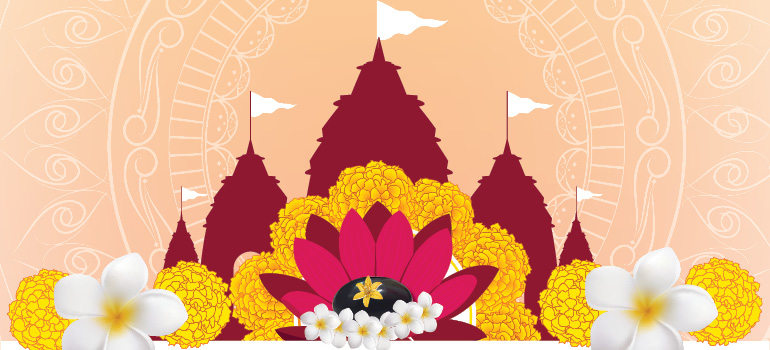Our member Ms A. Ghatak spent her childhood at Pabna of undivided Bengal, (now in Bangladesh). She vividly remembers some of her childhood days and shares with us her memories.
I was brought up in a joint family, a common phenomenon in those days. As I lost my father at a very young age, my grandmother harnessed a soft corner for me and my two siblings, and we too were very close to her. We lived in a big house with my uncles and their families. We had acres of lands, and I remember the addition of a few more, which were gifts from my paternal aunts (????????) who came to live with us when they became widows.
We used to enjoy all the festivals together and even if there were no guests from outside, the family was big enough to entertain one another. We had an established ‘??????? ?????’ or ‘?????????’- a stone well described in Hindu Mythology as an incarnation of all 10 forms of Lord Vishnu. But as a child that was beyond our understanding, and we were extremely inquisitive to know why there was a hole in the middle of the Shila. Every time we kids asked our grandmother about the hole, she replied that, that was the nasal hole from where God inhaled and exhaled.
The ????? was worshiped and were offered ???? every day. We had a separate vegetarian kitchen. My mother was in-charge of it and had the responsibility of cooking the ????.
The ????????? ????? placed on its decorated throne was brought out from the worship room to the veg kitchen to have elaborate ???? every day. Special ???? with several traditional dishes were cooked and a special puja was performed during ????? ???????? – the Bengali New Year. A priest was appointed who visited our house every day to worship the ????????? ????? . He was extremely religious and made sure all rituals were strictly followed under his supervision. Elaborate puja offerings were made every year during ????? ???????? for the wellbeing of the family.
A permanent altar was constructed in the centre of the inner courtyard, which was cleaned and used every year for ????? ?????. The well decorated ????? or swing was placed on the topmost step of the altar with the ????? on it for the entire day. Only on that day of the year the ????? was placed there and according to rituals someone or the other had to pull the string to keep it swinging. Just before sunset the ????? was removed from there and brought back into the puja room.
After the Bengal partition we stayed at Pabna for a few years, but my grandmother decided to leave the place overnight sensing trouble. Since my mother was already in Kolkata with her elder sister we went and joined them. We had to leave all our properties and the ????? behind. After a few years the priest came to Kolkata to handover the ????? . He brought it in his pocket and handed it over to us. As there was no separate room and space, my aunt handed over the ????? to the Kalighat Temple authority. Our monthly visit and offerings to the ????? at the Kalighat temple continued till my aunt and mother were alive.
The memories of those days are still fresh in my mind. It’s true that good memories never fade, in fact they make us happy whenever we think about them. It’s a wonder, so much has changed since then.
Categories
Traditional Celebrations

